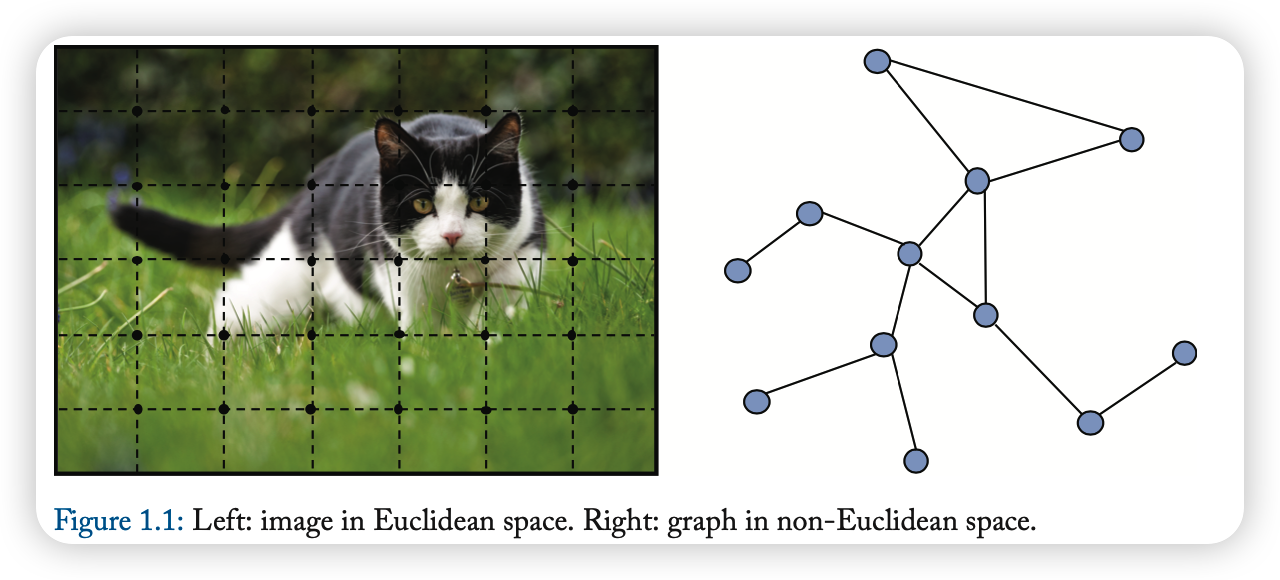1. Introduction
Graphs :
-
data structure with (1) node & (2) edges
-
in non-Euclidean space
-
tasks
-
(1) node classification
- (2) link prediction
- (3) clustering
-
-
convincing performance & high interpretability
1.1 Motivation
1.1.1 CNN
GNNs are motivated by CNNs
Keys of CNN
- (1) local connection
- (2) shared weights
- (3) use of multi-layer
Graphs & Keys of CNN
- (1) graphs are the most typical locally connected structure
- (2) shared weights reduce computational cost, compared with traditional spectral graph theory
- (3) multi-layer structre is the key to deal with hierarchical patterns
CNN vs GNN
- CNN : can only operate on regular Euclidean space
- GNN : ~ non-Euclidean

1.1.2 Network Embedding
motivation also comes from graph embedding
-
traiditional ML : rely on hand-engineered features
( thus, limited by its inflexibility & high cost )
-
Example)
- DeepWalk node2vec, LINE, TADW,…
\(\rightarrow\) Drawbacks :
(1) no parameters are shared….INEFFICIENCY
(2) lack of generalization ability ( can not deal with dynamic graphs & new graphs )
1-2. Overview
provide an introduction to different GNN models
- (1) detailed review over exisiting GNN models
- (2) categorize the applications
